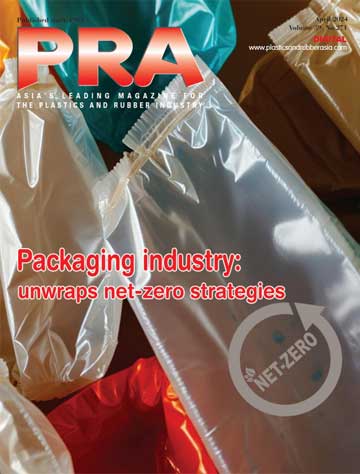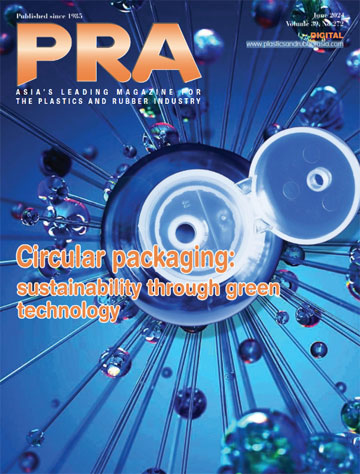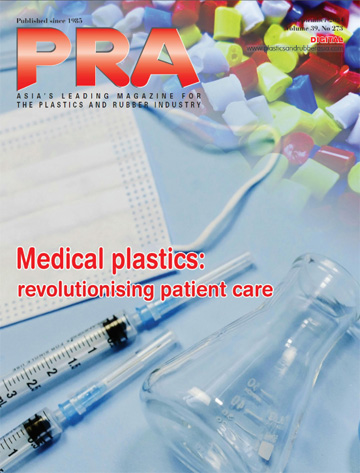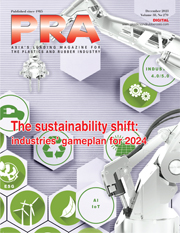From waste to resource: global rise of biopolymers
Amongst the emerging materials becoming commercially available, biopolymers offer appealing solutions, providing clear environmental benefits over traditional plastics, according to Angelica Buan in this report.
Industries are increasingly adopting sustainable, biobased materials in response to environmental pressures and strategic business goals. Rising consumer demand for eco-friendly products and stricter plastic waste regulations compel companies to reduce their environmental impact and integrate sustainable practices into their brands.
Biopolymers offer advantages over traditional plastics, such as biodegradability, reduced plastic waste, lower carbon footprint, and improved resource efficiency.
The biopolymers market is growing rapidly, fuelled by demand for alternatives to conventional plastics. It is projected to yield a market size that will grow at a CAGR of 10.4% from 2024, reaching nearly US$39 billion by 2030, according to Grandview Research’s Biopolymers Market Report. Similarly, estimates from Precedence Research suggest the market could even breach US$90 billion by 2032.
Asian forays into PLA, biopolymers
Global demand for polylactic acid (PLA) materials is rising as efforts to reduce carbon emissions intensify. According to Grandview Research, the global PLA market is projected to grow at a CAGR of 21.4%, reaching nearly US$2.8 billion by 2030. Similarly, Expert Market Research anticipates a CAGR of 15.2% for the APAC region from 2024-2032.
The Asia-Pacific region is witnessing rapid growth in the biopolymer/PLA market, driven by rising consumer awareness, supportive regulations and access to agricultural resources for feedstock.
Key players in the biopolymer industry include Indiaheadquartered Praj Industries that has launched the country’s first demonstration facility for biopolymers, showcasing its proprietary PLA technology.
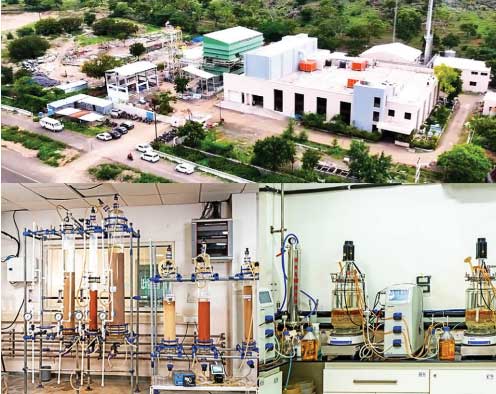
Praj’s facility represents a bold step for India in bioplastics, emphasising its commitment to biorefineries and sustainable technologies. This facility, part of Praj’s Bio-Prism portfolio, is the first in a series of biopolymer innovations and showcases an advanced production setup across three acres, with capacities of 100 tonnes/year for lactic acid, 60 tonnes/ year for lactide, and 55 tonnes/year for PLA. Equipped with sections for fermentation, chemical synthesis, separation, and purification, it integrates the complete PLA production process.
Aligning with India’s new BioE3 (Biotechnology for Economy, Environment, and Employment) Policy to support a Net Zero carbon economy, Praj’s PLA technology offers applications in sectors including food, personal care, agriculture, and pharmaceuticals, providing both flexible and rigid product options.
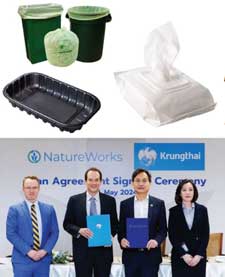
Along the same vein, US-based NatureWorks has gained backing from Thailand’s Krungthai Bank PCL to optimise the capital structure for its new fully-integrated Ingeo brand PLA manufacturing facility in Thailand. The firm is jointly owned by Thailand’s largest integrated petrochemical/refining company PTT Public Company and US-based conglomerate Cargill. The financing from Krungthai Bank, the country’s third largest bank, amounting to US$350 million, is one of the singular largest loans in the bank’s decades-long history.
Erik Ripple, President/CEO of NatureWorks said that the funding will enable NatureWorks to expand its international customer access to fully biobased, low-carbon biomaterials that feature unique performance attributes valued by global downstream packaging and fibre markets.
NatureWorks' second facility will be located at the Nakhon Sawan Biocomplex, which provides access to local feedstock like sugarcane and established infrastructure for processing it into sugar for fermentation. The site also offers the necessary utilities for the plant's operation.
The new 75,000-tonne/year facility will produce the full range of Ingeo biopolymer grades to support rapid growth in Asia-Pacific markets, including 3D printing, hygiene non wovens, compostable coffee capsules, flexible packaging, and food serviceware. Construction is on track and full production is slated for 2025.
(PRA)SUBSCRIBE to Get the Latest Updates from PRA Click Here»

